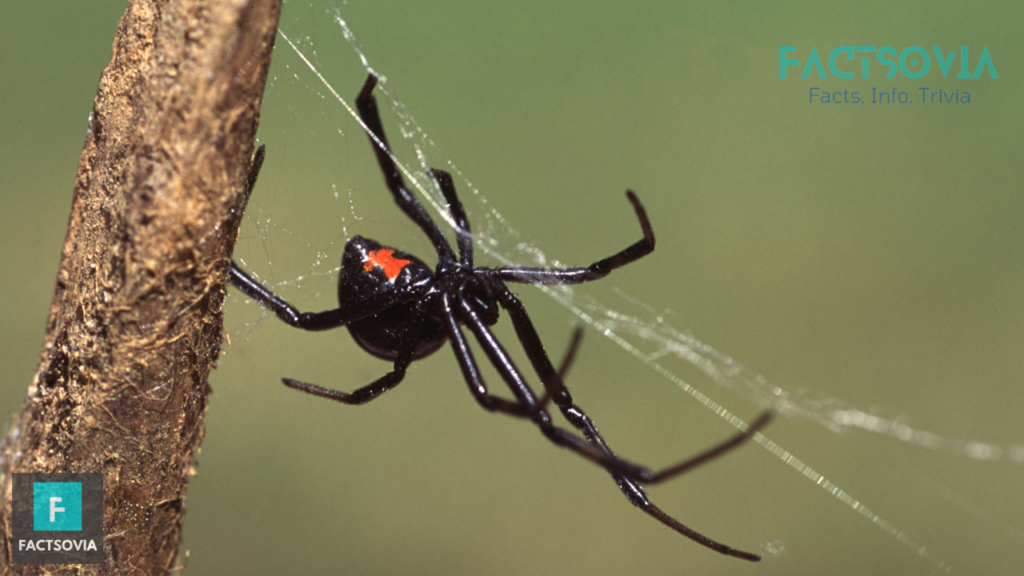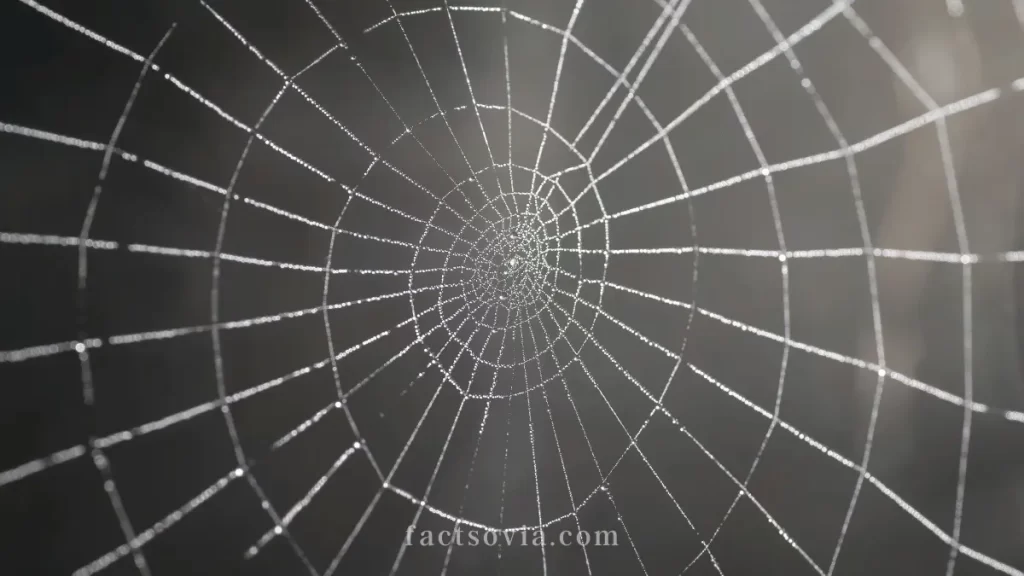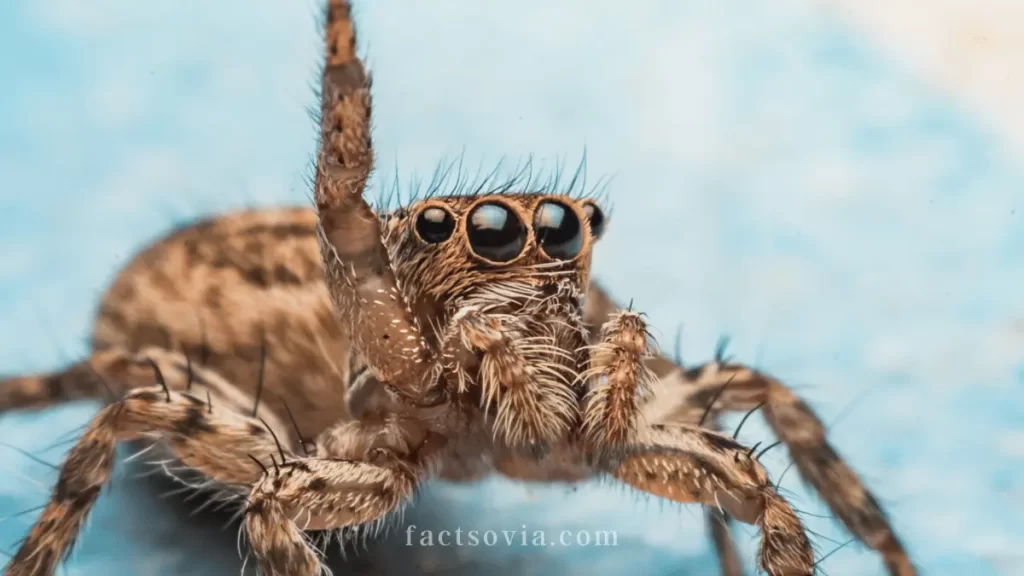We use affiliate links to run our site. When you buy through links on our site, we may earn an affiliate commission, without any added cost to you. Learn more
Spiders, those eight-legged creatures that often send shivers down our spines, are actually quite fascinating. With over 45,000 known species worldwide, spiders come in a wide range of shapes and sizes.
From the tiny peacock spider to the massive Goliath bird-eater, each species has its own unique characteristics that make it intriguing.
One of the most remarkable aspects of spiders is their ability to produce silk. Spiders use this incredible material for various purposes such as building webs for catching prey or creating protective egg sacs.
Spider silk is not only incredibly strong but also elastic and lightweight. In fact, some scientists believe that if we were able to replicate spider silk on a large scale, it could revolutionize industries like medicine and construction.
Another interesting feature of spiders is their hunting techniques. While many people associate spiders with web-spinning, not all species rely on webs to catch their prey.
Some spiders are active hunters who chase down their victims while others use camouflage or mimicry to ambush unsuspecting insects. It’s truly amazing how these small arachnids have evolved different strategies for survival and adaptation.
In addition to being intriguing creatures themselves, spiders play an important role in ecosystems around the world. As predators, they help control populations of insects like flies and mosquitoes which can be pests or carriers of diseases.
Without spiders keeping these populations in check, our environment would be overrun by unwanted pests. So next time you see a spider lurking in your home or garden, remember that they’re doing us a favor by keeping other critters under control!
| Taxonomic Rank | Classification |
|---|---|
| Domain | Eukaryota |
| Kingdom | Animalia |
| Phylum | Arthropoda |
| Subphylum | Chelicerata |
| Class | Arachnida |
| Clade | Tetrapulmonata |
| Order | Araneae (spiders) |
| Suborders | – Mesothelae |
| – Opisthothelae | |
| Infraorders | – Mygalomorphae |
| – Araneomorphae | |
| Diversity | Approximately 132 families and |
| around 50,000 species |
Are Spider Insects?
No, spiders are not insects. Spiders belong to the class Arachnida, while insects are classified under Insecta. The primary distinctions lie in the number of legs (spiders have eight, insects have six), body segments (spiders have two, insects have three), and the presence of wings (insects can fly, spiders cannot). These differences highlight their separate evolutionary paths and roles in ecosystems.
What is An Insects:
Insects are a diverse and highly populous group within the animal kingdom. They include well-known creatures like ants, bees, butterflies, and beetles. Insects belong to the class Insecta and are characterized by three key features:
- Three Body Segments: Insects typically have three body segments – head, thorax, and abdomen.
- Six Legs: They consistently possess six legs.
- Exoskeleton: Insects have an external skeleton made of a tough material called chitin.
What is A Spider:
Spiders, on the other hand, are arachnids. They belong to the class Arachnida and include species like tarantulas, orb-weavers, and wolf spiders. These eight-legged wonders can be identified by several distinct features:
- Eight Legs: Spiders have twice the number of legs compared to insects.
- Two Body Parts: They have a two-part body: the cephalothorax and the abdomen.
- Spinnerets: Spiders possess specialized organs called spinnerets, which produce silk for webs and cocoons.
What Sets Them Apart?
Body Structure:
One of the most apparent differences between insects and spiders is their body structure. Insects have three distinct body segments, whereas spiders have just two. This key variation plays a pivotal role in differentiating the two groups.
Number of Legs:
Counting legs can be a quick way to distinguish between these arthropods. Insects have six legs, while spiders boast eight. If you come across a critter with more than six legs, it’s a pretty good indicator that you’re dealing with a spider.
Wings:
Many insects have wings, which they use for flight. Spiders, however, are not equipped with wings. Their mode of mobility is quite different; they rely on their silk-producing spinnerets to move and create intricate webs.
Anatomy and Physical Characteristics of Spiders
Spiders are fascinating creatures with unique anatomy and physical characteristics that set them apart from other arthropods.
One notable feature of spiders is their eight legs, which allow them to move swiftly and gracefully across various surfaces.
These legs are covered in tiny hairs called setae, which help spiders detect vibrations in the environment and navigate their surroundings.
Another distinctive characteristic of spiders is their ability to produce silk. Silk glands located at the back end of a spider’s abdomen secrete a liquid protein solution that hardens upon contact with air, forming strong and flexible strands of silk.
Spiders use this silk for a variety of purposes, including building intricate webs for catching prey, creating egg sacs for protecting their offspring, and even as a means of transportation by ballooning through the air.
In addition to their legs and silk production abilities, spiders also possess specialized mouthparts known as chelicerae. These structures contain fangs that inject venom into their prey or enemies.
While most spider bites are harmless to humans, some species have venom potent enough to cause discomfort or even pose a threat to our health.
However, it’s important to note that the majority of spider species are not dangerous to humans and play vital roles in maintaining ecological balance by controlling insect populations.
The anatomy and physical characteristics of spiders highlight their remarkable adaptations for survival in diverse environments.
From their agile legs equipped with sensory hairs to their exceptional silk-producing capabilities and venomous fangs – these features contribute to making spiders one-of-a-kind creatures worthy of admiration rather than fear.

Spider Behavior: Web Spinning and Hunting Techniques
Spiders are known for their remarkable ability to spin intricate webs, which serve as both a means of capturing prey and a shelter.
The process of web spinning begins with the spider secreting silk from special glands located in its abdomen. This liquid silk is then pulled through tiny spigots on the spider’s spinnerets, where it solidifies upon contact with air.
Once the silk has been extruded, spiders use their legs to manipulate and weave it into various patterns. Different species of spiders create different types of webs, each tailored to suit their specific hunting techniques.
Some spiders construct orb-shaped webs that are suspended between trees or plants, while others build funnel-shaped retreats or irregular tangles called cobwebs.
When it comes to hunting techniques, not all spiders rely solely on their webs. Some actively hunt down their prey instead.
These hunters possess keen eyesight and agility that allow them to stalk and pounce on unsuspecting insects or other small creatures. They may also employ stealthy strategies such as camouflage or ambushes to capture their meals effectively.
In summary (without using those words), understanding spider behavior when it comes to web spinning and hunting techniques provides us with insights into these fascinating creatures’ survival strategies.
By mastering the art of web construction or employing active hunting tactics, spiders have evolved diverse ways of securing food sources in their environments.
So next time you come across a spider’s delicate creation glistening in the sunlight or witness one gracefully stalking its prey, take a moment to appreciate the incredible adaptations that make these arachnids such successful predators in nature’s grand tapestry
A Closer Look at Different Spider Species
One fascinating aspect of the world of spiders is the incredible diversity of species that exist. From tiny jumping spiders to large tarantulas, there are thousands of different types of spiders found all around the globe.
Each species has its own unique characteristics and adaptations that make it well-suited for its specific environment.
Take, for example, the orb-weaving spider. These delicate creatures construct intricate webs made up of radial threads and spiral-capture silk.
Their perfectly designed webs serve as both a trap for unsuspecting prey and a home where they can rest and wait patiently for their next meal.
Orb-weaving spiders come in various sizes and colors, but they all share this remarkable ability to create stunningly complex structures.
Another interesting spider species is the wolf spider. Unlike web-building spiders, these hunters rely on speed and agility to catch their prey.
With excellent eyesight, wolf spiders actively search for insects or other small animals to pounce on them with lightning-fast reflexes.
They do not spin elaborate webs but instead, carry their egg sacs attached to their spinnerets until hatching time arrives.
Lastly, let’s not forget about the famous black widow spider – known for its venomous bite that can be dangerous to humans if untreated properly.
These glossy black arachnids have distinctive red hourglass-shaped markings on their abdomens, making them easily recognizable among other spider species.
Despite their reputation as dangerous predators, black widows play an essential role in controlling populations of insects like flies and mosquitoes.
The world of different spider species is truly captivating! From masterful web weavers like orb-weaving spiders to agile hunters like wolf spiders and notorious venomous predators such as black widows – each type offers unique insights into nature’s diverse creations without fail!
The Role of Spiders in the Ecosystem
Spiders play a crucial role in maintaining the balance of ecosystems. One of their main contributions is controlling insect populations.
As predators, spiders feed on insects such as flies, mosquitoes, and even agricultural pests like aphids and caterpillars. By keeping these populations in check, spiders help prevent outbreaks that could damage crops or spread diseases.
Another important role that spiders fulfill is acting as food sources for other animals. Many birds, reptiles, amphibians, and small mammals rely on spiders as part of their diet.
This interdependence creates a complex web of interactions within the ecosystem. Without spiders as an available food source, these predator species would struggle to find enough sustenance to survive.
Additionally, spider webs contribute to nutrient cycling in the environment. When prey gets caught in a web and subsequently consumed by the spider, nutrients are transferred from one organism to another.
These recycled nutrients then become available for other organisms within the ecosystem to utilize for growth and development.
In summary (without using those words), spiders have a significant impact on ecosystems through insect control, serving as vital food sources for various animals and contributing to nutrient-cycling processes through their webs.
Their presence ensures ecological stability and plays an essential role in maintaining healthy environments for all living organisms involved.
Spider Silk: Nature’s Incredible Supermaterial

Spider silk is truly a marvel of nature. It is an incredibly strong and flexible material, pound for pound stronger than steel.
Despite its strength, spider silk is also lightweight and elastic, making it the perfect material for various applications. Scientists have been studying spider silk for years in hopes of harnessing its incredible properties.
One of the most fascinating aspects of spider silk is its composition. Spider silk is made up of proteins called spidroins, which are produced by specialized glands in the spider’s abdomen.
These proteins are then extruded through spinnerets located at the rear end of the spider’s body, where they combine to form a solid thread. The composition and structure of these proteins give spider silk its unique properties.
The potential uses for spider silk are vast and varied. Researchers have explored using it in fields such as medicine, textiles, construction materials, and even bulletproof vests.
Its strength and flexibility make it ideal for creating artificial tendons or ligaments that can be used in medical procedures or repairing damaged tissues.
Additionally, its lightweight nature could revolutionize industries that rely on heavy materials like steel or aluminum.
Spider Silk: Nature’s Incredible Supermaterial holds immense promise for future advancements across multiple industries. As scientists continue to unravel the mysteries behind this remarkable substance, we may soon see revolutionary breakthroughs that will change our world as we know it – all thanks to spiders!
Spiders as Predators: What Do They Eat?
Spiders, as predators, have a diverse and often surprising diet. While many people may associate spiders with catching insects in their webs, they actually consume a wide range of prey. In fact, some larger spider species are known to feed on small vertebrates such as frogs and lizards!
These arachnids are skilled hunters who adapt their feeding habits based on the availability of food sources in their environment.
One common misconception is that all spiders exclusively eat flies or mosquitoes. While these flying insects do makeup part of the spider’s diet, they also target other types of insects like beetles, ants, grasshoppers, and even bees.
Spiders use their silk-spun webs to catch unsuspecting prey that gets entangled in the sticky threads. However, not all spiders rely on webs for hunting; some actively stalk and pounce on their victims instead.
Certain spider species display remarkable hunting strategies that allow them to capture more elusive prey. For example, jumping spiders possess incredible agility and excellent eyesight which enables them to leap onto unsuspecting insects from a distance.
Wolf spiders prefer an active hunting approach where they chase down their prey rather than relying solely on web-building skills.
Overall, it’s important to recognize the crucial role that spiders play in maintaining ecological balance by controlling insect populations. They serve as natural pest control agents by keeping numbers of potential agricultural pests in check without relying heavily on chemical pesticides.
So next time you come across a spider spinning its intricate web or stalking its prey with precision and stealthiness – remember how vital these fascinating creatures are for our ecosystems!
Common Misconceptions About Spiders

Spiders have long been the subject of many misconceptions, often portrayed as dangerous and deadly creatures. However, it’s time to set the record straight and debunk some of these common myths.
Firstly, not all spiders are venomous or pose a threat to humans. In fact, the majority of spider species are harmless and play an important role in controlling insect populations.
Another misconception is that spiders always bite humans when they come into contact with them. The truth is that spiders typically only bite as a last resort if they feel threatened or cornered.
Most spider bites result in minor symptoms such as redness, swelling, and itching, similar to a mosquito bite. It’s important to remember that spiders would much rather avoid human interaction altogether.
Lastly, there is a belief that all spiders spin intricate webs like those seen in movies or cartoons. While it’s true that many spider species do create webs for hunting or shelter purposes, not all spiders rely on this method of catching prey.
Some species actively hunt their prey without using webs at all. Spiders have diverse hunting techniques depending on their specific adaptations and habitats.
It’s crucial to dispel these misconceptions about spiders so we can appreciate these fascinating creatures for what they truly are – valuable members of our ecosystems who help maintain balance by controlling insect populations naturally.
By understanding more about their behaviors and characteristics, we can coexist peacefully with these eight-legged wonders instead of fearing them unnecessarily
FAQ
Are all spiders dangerous?
No, not all spiders are dangerous. While some species can deliver venomous bites, the majority of spiders are harmless to humans.
Do all spiders spin webs?
No, not all spiders spin webs. Some spiders rely on other hunting techniques, such as ambush hunting or actively pursuing their prey.
Can spiders survive without their webs?
Yes, spiders can survive without their webs. While webs are essential for some species to catch prey, spiders are adaptable and can use alternative methods to hunt and survive.
Are all spiders solitary creatures?
No, not all spiders are solitary. Some species exhibit social behaviors, living together in colonies or sharing webs with other spiders.
Are spiders beneficial for the environment?
Yes, spiders play a crucial role in the ecosystem. They help control populations of insects and other pests, contributing to the balance of nature.
Is spider silk stronger than steel?
Yes, spider silk is known for its incredible strength-to-weight ratio, making it stronger than steel of the same thickness. It is one of nature’s supermaterials.
Can spiders eat humans?
No, spiders are not capable of eating humans. While some larger species may bite if provoked, they are not capable of consuming an entire human.
Are all spiders venomous?
No, not all spiders are venomous. Most spiders have venom, but only a small percentage of species possess venom strong enough to cause harm to humans.
Do all spiders have eight eyes?
No, not all spiders have eight eyes. While many species do have eight eyes, some have fewer, and a few species are even blind.
Can spiders jump?
Yes, some spiders can jump. Certain species, like jumping spiders, are capable of impressive leaps to catch their prey or escape from danger.
Amazon and the Amazon logo are trademarks of Amazon.com, Inc, or its affiliates.
